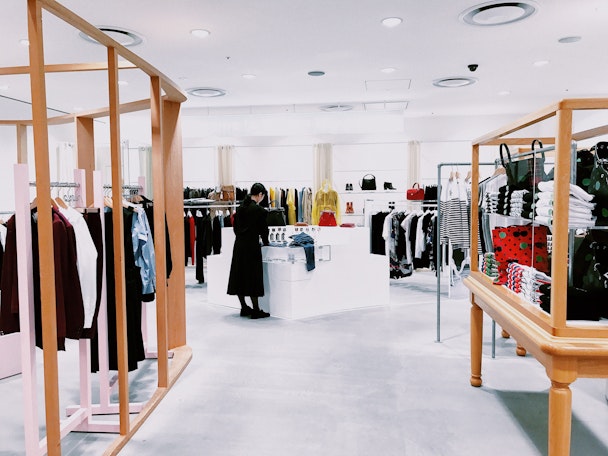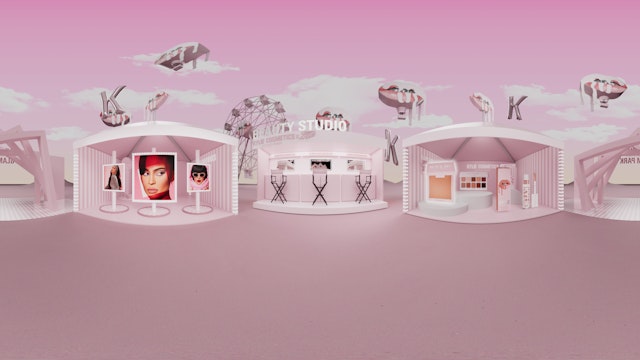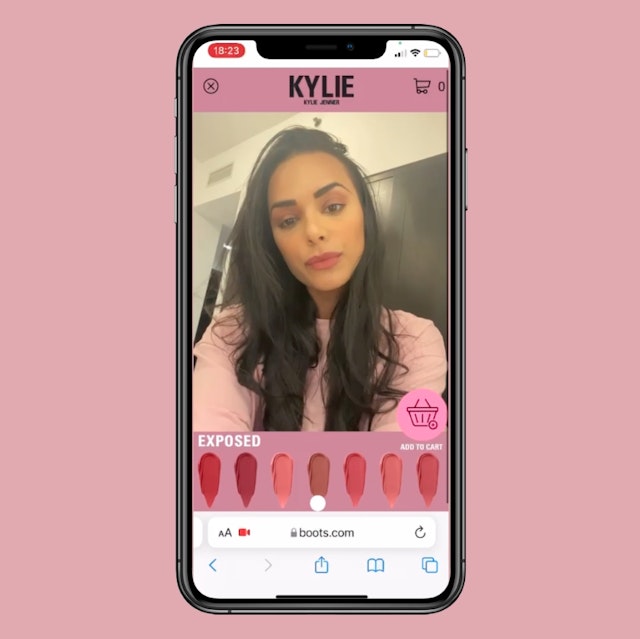4 brands bringing VR and AR experiences to real-world commerce
Brands are mastering the arts of virtual reality and augmented reality in their e-commerce. Now, says Laura Lane, smart leaders are deploying those same techniques in physical spaces.

LAB considers how to embed digital experiences into physical retail environments. Image: Korie Cull/Unsplash
Using apps to deliver additional content and access in a buying journey, including virtual try-on (VTO) with virtual reality (VR) and augmented reality (AR) technology, is an integral part of the digital customer experience for many beauty and fashion brands.
As a result, customers are becoming increasingly familiar with digital technologies like VR and AR in online brand interactions. The next logical step is to integrate these into physical commerce spaces. Digital innovation is having more of an impact on real-world customer experience.
Augmenting IRL commerce: Kylie Cosmetics
Kylie Jenner's Kylie Cosmetics AR-designed 'Kylie Virtual World' launched in London's Covent Garden this month. The immersive experience lets shoppers enjoy make-up and skin consultations with VTO features for exploring new looks. The Glam Shop ran in partnership with Boots, with interactive games and complimentary giveaways to expand the customer's experience further.

Experiential marketing and immersive experience: Nike
Nike has also used in-app services to deepen its relationship with customers, providing access to sporting experts who offer personalized workouts, priority access to events, membership to Nike's Plus rewards program and online shoe fitting.
Advertisement
Its New York-based House of Innovation flagship store hosts the mobile commerce experience, letting customers physically augment their experience in-store. The app's in-store mode allows customers to discover more about the shop's merchandise by adding items to a favorites list; requesting try-ons; and checking out items on mobile. The technology personalizes and improves the retail experience by creating a more immersive shopping encounter.
A social-first approach to commerce: Burberry
Brands that have succeeded with technological experiments in gaming, social media product drops, and app-driven customer service are embedding these elements in-store. Burberry has built ways for online browsing, exploring influencer recommendations and enabling platform-specific product drops.
Advertisement
The lux fashion brand is also using branded tech to enhance its social retail experience. In its Chinese flagship store, customers can use a custom WeChat mini-program to book in-store appointments and try-ons. With access to customer service, they can discover new products and obtain exclusive content while sharing their own. The app is an in-store digital companion, building social currency among customers.
Mark Morris, Burberry’s senior VP of digital commerce says: "The store is about trying to connect your online life with your in-store life so that one adds value to the other".
User-generated content
Brands offering VTO experiences gain from the user-generated content that emerges. Inside Burberry's flagship, a digitally-enhanced room known as the Trench Experience encourages customers to create and share content on social media.
Suggested newsletters for you
Kylie's Glam Park constantly pushes customers to share their moments online, such as displaying new lip shades on the big screen. Kylie Jenner says: “I want my fans to be able to try my make-up and skincare products in person whilst also having fun with the brand when achieving the latest summer glam looks.”

Personalizing the experiential: Cheetos
VTO is not an immediately obvious route for food brands, but Cheetos explored this trend with its ‘Hands-Free House’ concept: a hands-free device for people with fingers coated in its ubiquitous orange dust. The accompanying experiential pop-up was a catered event encouraging guests to socialize and network. The mixed reality marketing strategy was part of a wider campaign to connect with consumers through immersive experiences, both in-person and virtually.
Taking experiences beyond retail environments and adopting face-to-face engagements deepens brand opportunities for enhancing customer experiences. Kylie Cosmetics rebranded to Kylie Virtual World to match its Glam Park and ensure that customers unable to access the physical space could still share in the digital experience.
As customers become more familiar with VR and AR, they increasingly expect to encounter these technologies in their IRL experiences and online. Brands can strengthen their consumer engagement by merging physical and digital to deliver an enhanced customer experience.
Incorporating digital experiences into brand events: 3 Is and an E
Insights: Use a VR or AR experience at an event to gather insights from audience guests. Most AR requires scanning a QR code, which provides a number of touchpoints throughout an experience's navigation.
'In sight': Provide a clear call-to-action across the VR/AR features to ensure maximum engagement. The more guests who can access these features, the more data you can capture. More exposure also increases the likelihood of guests sharing the experience on socials, which will only gain wider reach for your event or brand.
Incentive: Incentivize guests to engage with your digital experience; provide a value exchange that makes them feel rewarded. Reveal something exclusive in the VR/AR experience or offer a free gift.
Enhance: Does the VR/AR feature enhance an in-person event? Does it have a purpose, reason or solution? AR tech can offer virtual try-ons so guests can test products they are interested in. Make the most of this.
Laura Lane is chief marketing officer at Studio BLUP, part of the Lab Group of agencies.
Content by The Drum Network member:

LAB Group
We’re a group of agencies with a simple mission: use pioneering research into human behaviour to advance brands in a way that digital and creativity alone cannot...
Find out more
